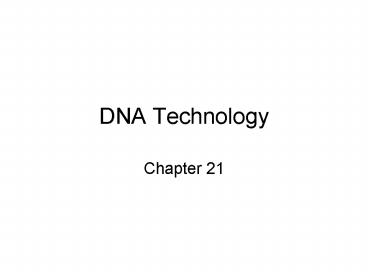DNA Technology - PowerPoint PPT Presentation
1 / 7
Title:
DNA Technology
Description:
Based on FRET between donor and acceptor labeled DNA. Complementary strands ... Donor intercalates with double stranded DNA and interacts with acceptor labeled oligo ... – PowerPoint PPT presentation
Number of Views:22
Avg rating:3.0/5.0
Title: DNA Technology
1
DNA Technology
- Chapter 21
2
DNA Sequencing
- DNA replication occurs by adding nucleotides to
the 3 hydroxyl group - Dideoxynucleotide triphosphate terminates
reaction - Radioactive 32P used for detection
- Fluorescence probe used in place of the 32P
- Separation based on size (gel electrophoresis)
one base pair difference between fragments
3
(No Transcript)
4
Fluorescence Methods
- Single fluorescent primer and nonfluorescent
ddNTPs four separate lanes (each terminated
with respective ddNTP) - Different fluorescent probe on each ddNTP run
in same lane and identify by emission spectra of
the base - Need distinct emission spectra and excitation at
same wavelength
5
ddNTP Terminators
- Can be excited at 488 QY differ by less than a
factor of 2. - Emission spectra overlap (need to use two
different band pass filters to identify bases) - Capillary electrophoresis identify 1000
bases/hour - Alternative methods FRET or Lifetimes
6
DNA Hybridization
- Based on FRET between donor and acceptor labeled
DNAComplementary strands - Binding to adjacent regions along same DNA strand
- Donor intercalates with double stranded DNA and
interacts with acceptor labeled oligo - Competitive hybridization
7
FISH
- Fluorescence in situ hybridization metaphase
chromosomes are exposed to probe DNA - Denaturation of chromosomes and hybridization
with probe DNA - Fluorophores should not interfere with
hybridization - Fluorophores can be incorporated into DNA without
disrupting base pairing - Ability to detect all 24 chromosomes
- Sort by flow cytometry
- Identify specific sequences associated with
disease or markers































